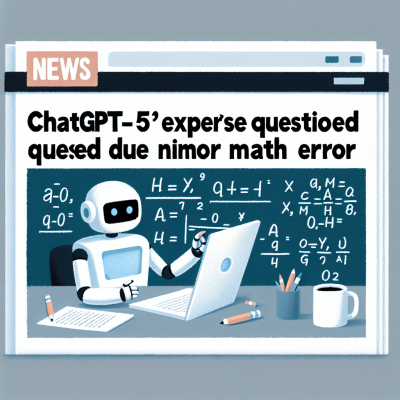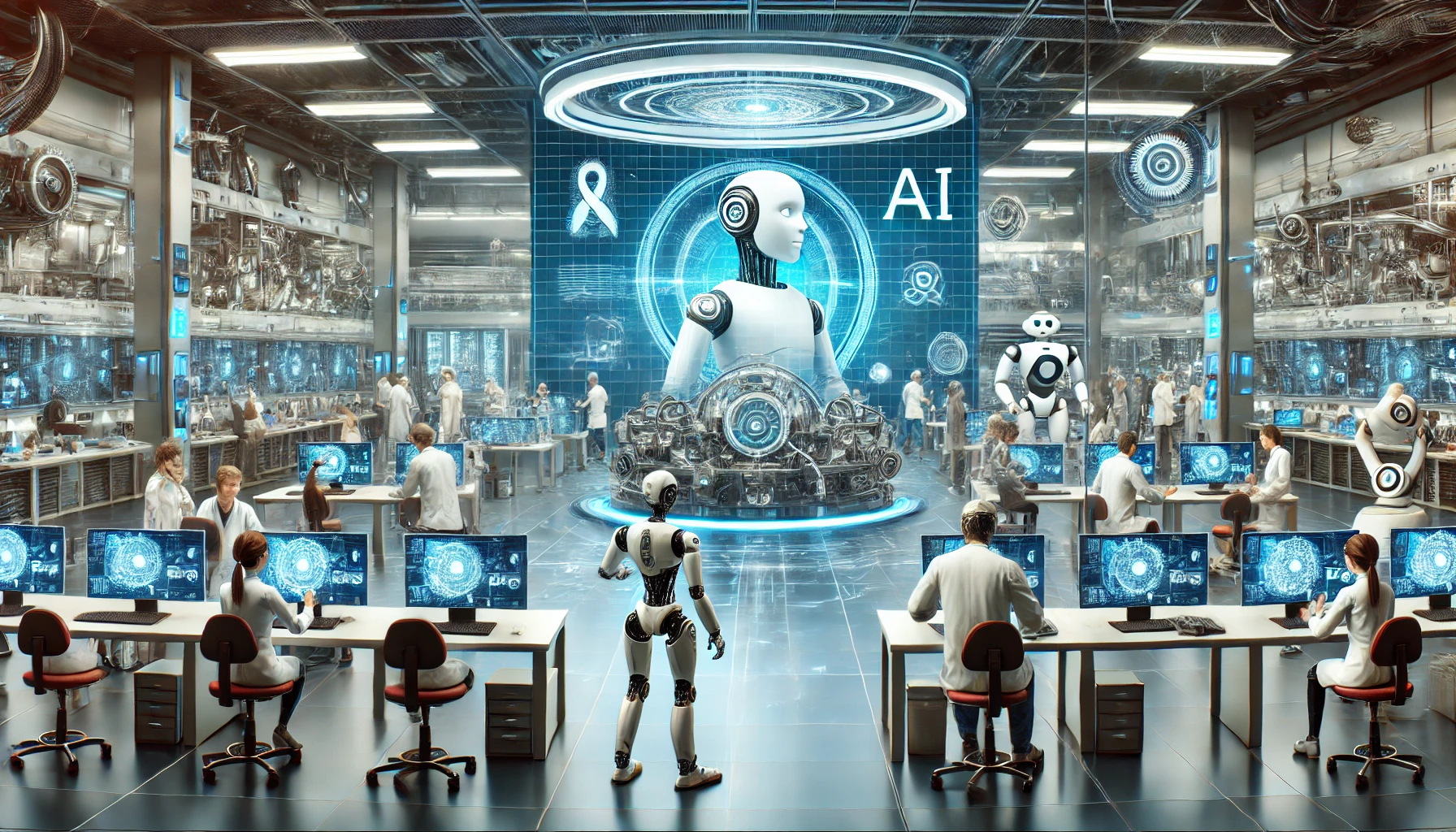
Introduction: GPT-5 Raises the Bar for AI Intelligence
OpenAI has unveiled its most advanced language model to date — GPT-5 — and it’s already making waves in the tech community. Sam Altman, CEO of OpenAI, recently referred to GPT-5 as a “PhD-level expert”, thanks to its significantly enhanced reasoning abilities, superior coding skills, and better understanding of nuances in language. However, while the model has made tremendous progress, a minor math error caught in the wild proves that even GPT-5 isn’t omniscient — perfection remains elusive when it comes to AI.
What Makes GPT-5 Stand Out?
The latest version of the GPT series is engineered with a huge leap in capabilities compared to its predecessors. Here’s what’s new and noteworthy:
1. Advanced Reasoning
GPT-5 can now analyze and deduce with greater logical finesse. This attribute allows it to delve deep into complex queries, much like a skilled academic or analyst. It responds to multi-step, logic-heavy questions with a new level of rigor, putting it a notch closer to human-like reasoning.
2. Improved Code Synthesis
For developers and coders, GPT-5 is more than a language model — it functions effectively as a debugging assistant or code reviewer. The model can generate precise code in multiple programming languages and detect flaws that earlier generations would overlook.
3. Expanded Knowledge Base
Covering a broader spectrum of data, GPT-5 is equipped to handle niche queries across disciplines — from medicine and law to engineering and abstract subjects. OpenAI states that it shows an increased breadth and contextual accuracy in academic and technical responses.
GPT-5’s “Small Slip” — When Expert AI Gets Stumped by Math
Despite all its high-level capabilities, a small math error pointed out in GPT-5’s performance served as a humble reminder that even the most sophisticated LLM isn’t infallible. While the details of the slip weren’t disclosed in the report, it emphasized a critical aspect of generative AI: reliability doesn’t mean perfection.
Why Do These Mistakes Still Happen?
Even with its substantial improvements, GPT-5 is still fundamentally a statistical prediction machine. It doesn’t “understand” math the way a human mathematician does — instead, it generates the most probable output based on training data. Consequently, it may fumble on problems that require strict computational logic, especially in edge cases or ambiguous formulations.
Implications of This Limitation
For now, such errors serve as useful benchmarks that highlight the continued need for human oversight. Industries involving high-stakes decision-making like finance, healthcare, and law should still approach AI-generated advice with caution. GPT-5 is a powerful tool — but it’s precisely that: a tool, not a replacement for human judgment.
Sam Altman’s Vision for the Future of AI
Despite the occasional hiccup, OpenAI remains confident in its trajectory. Sam Altman underscores that continued iterations will move the company ever closer to Artificial General Intelligence (AGI). GPT-5, in his view, is not just an incremental upgrade — it represents a major leap toward his vision: an AI that can assist, reason, and even challenge us like an expert peer.
Human-Like Collaboration
One of the long-term goals for OpenAI is seamless collaboration between humans and AI. With GPT-5’s improved reasoning context, developers, educators, researchers, writers, and students are already finding ways to integrate it as a functional collaborator rather than a passive assistant.
Boosting Creative and Analytical Workflows
Many creators are already leveraging GPT-5 in content generation, software development, data analysis, and strategic planning. This move into high-level thinking areas marks a true departure from earlier models that primarily provided reactive or support-style content.
Key Takeaways: GPT-5 Is Powerful — But Not Perfect
GPT-5’s evolution marks a significant milestone in the AI ecosystem. With enhanced reasoning, a broader and more accurate knowledge base, and more reliable coding functionality, it sets a new precedent in AI-enabled productivity. However, as its math slip illustrates, the journey toward flawless AI is still ongoing.
Here are the essential points to remember:
- GPT-5 is being called a “PhD-level expert” due to its refined reasoning and coding capabilities.
- It can generate high-quality responses across academic and technical fields, enhancing productivity and ideation.
- Minor errors, like mathematical missteps, show that it’s still not infallible.
- OpenAI encourages responsible use, suggesting human oversight is still necessary in critical tasks.
Conclusion: A Future Filled with Promise — and Caution
Sam Altman’s GPT-5 represents the future of AI collaboration — sophisticated, fast, and ever more capable. While its occasional errors are a humbling reminder of AI’s limitations, they also serve as fuel for innovation. As AI continues to evolve, one thing is clear: tools like GPT-5 will play a pivotal role not as replacements for human intelligence, but as powerful extensions of it.
The world of AI is transforming fast — and GPT-5 is at the very frontier of that change.


Leave a Reply